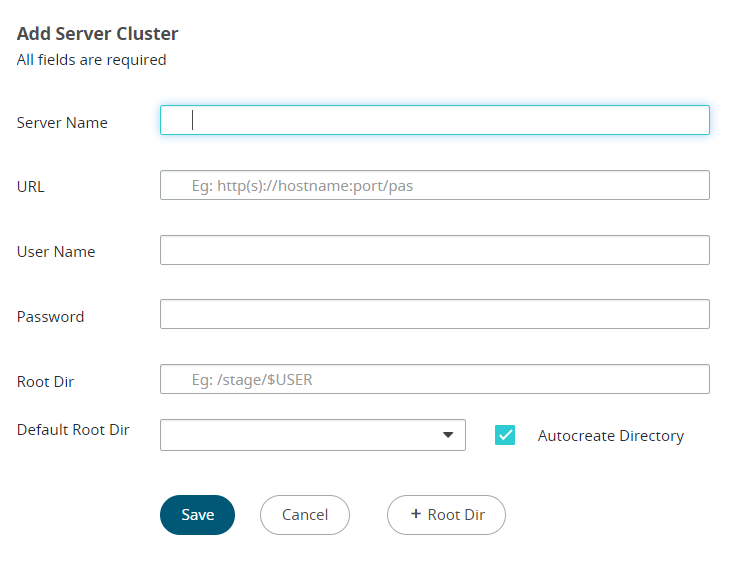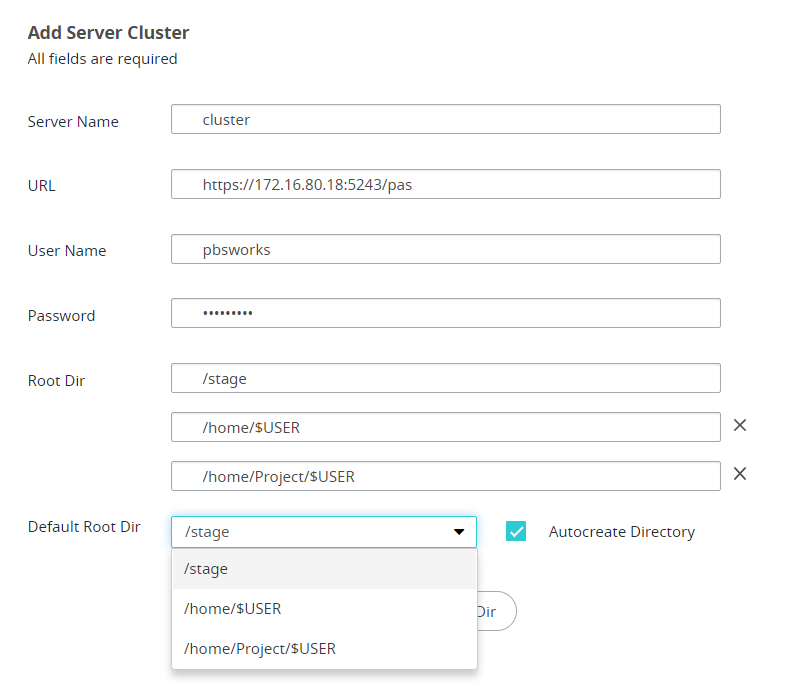Add a Server Cluster
Establish a connection to an HPC cluster so that you may begin submitting jobs.
When Access Web is installed on the same machine as PAS, a default local server is automatically added, eliminating the need for the Service User to add a server. Users can begin submitting jobs immediately. Access to the local filesystem is also configured through the default server. By default, users have access to the Job File Stage Area directory (default is /stage) that is defined at installation. Edit the default server to configure access to additional directories such as user home directories, for example /home.
Configure the default home location of users when you register a PAS server. Environment variables can be used to define the user's default home location like $HOME representing the PAS home directory and $USER_HOME or %U representing username. Access Web will display the contents of the user’s home directory path when the user logs into Access Web.
The following are examples for setting the user's home directory:
In Linux : /stage, /home, /stage/$USER, /home/$USER/project
An Autocreate Directory option is provided while adding a server cluster and it is set to true. This will create the root directory specified if it is not available in PAS.




